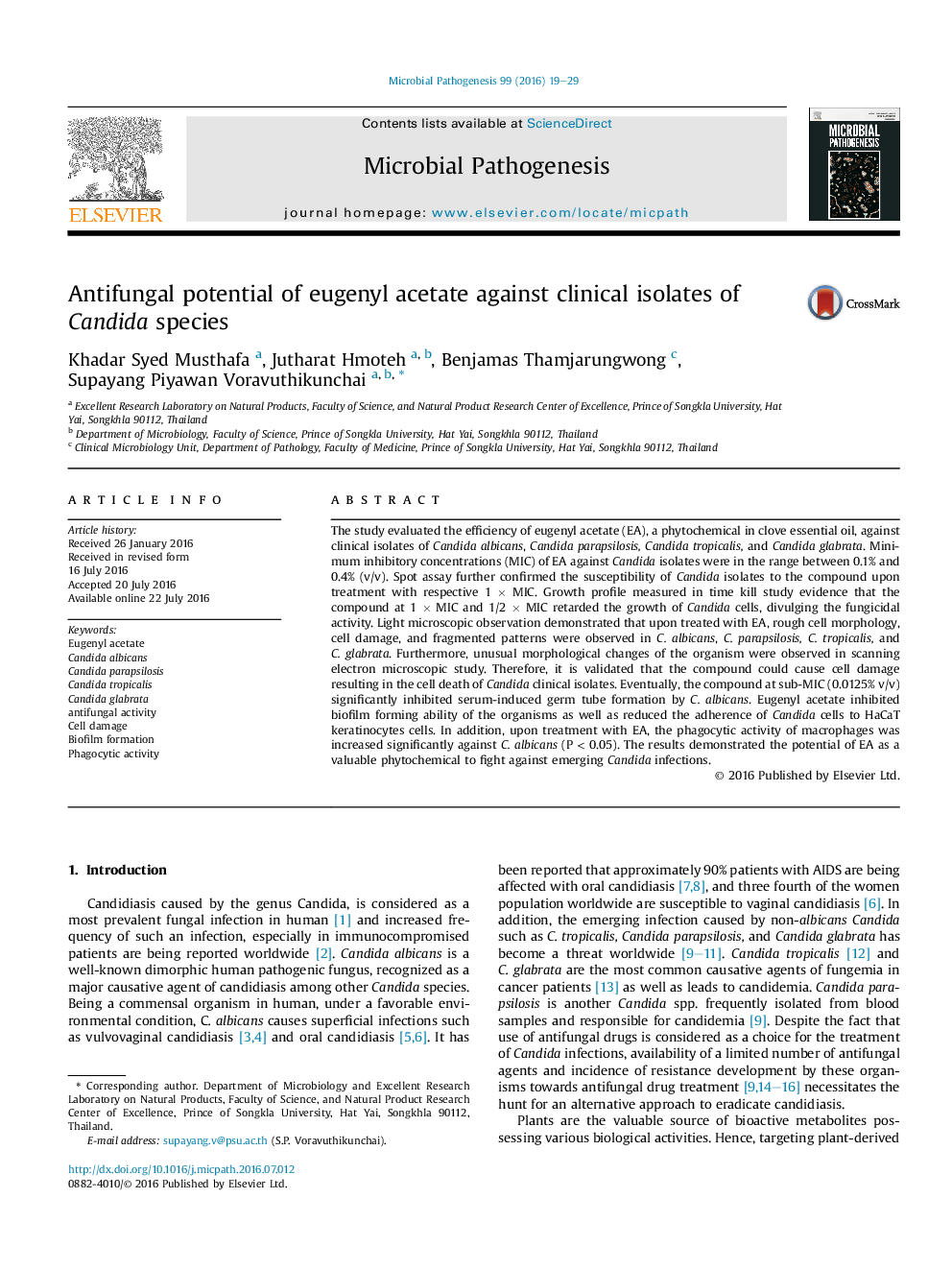| کد مقاله | کد نشریه | سال انتشار | مقاله انگلیسی | نسخه تمام متن |
|---|---|---|---|---|
| 3416263 | 1593690 | 2016 | 11 صفحه PDF | دانلود رایگان |
• Eugenyl acetate exhibited potential antifungal activity against clinical isolates of Candida species.
• The compound caused damage to Candida cells revealing fungicidal activity.
• The compound at sub-minimum inhibitory concentrations inhibited germ tube formation by C. albicans.
• Eugenyl acetate inhibited biofilm formation of the clinical Candida isolates.
• The compound reduced the adherence efficiency of C. albicans to keratinocytes.
• The compound enhanced phagocytic activity of macrophages against C. albicans.
The study evaluated the efficiency of eugenyl acetate (EA), a phytochemical in clove essential oil, against clinical isolates of Candida albicans, Candida parapsilosis, Candida tropicalis, and Candida glabrata. Minimum inhibitory concentrations (MIC) of EA against Candida isolates were in the range between 0.1% and 0.4% (v/v). Spot assay further confirmed the susceptibility of Candida isolates to the compound upon treatment with respective 1 × MIC. Growth profile measured in time kill study evidence that the compound at 1 × MIC and 1/2 × MIC retarded the growth of Candida cells, divulging the fungicidal activity. Light microscopic observation demonstrated that upon treated with EA, rough cell morphology, cell damage, and fragmented patterns were observed in C. albicans, C. parapsilosis, C. tropicalis, and C. glabrata. Furthermore, unusual morphological changes of the organism were observed in scanning electron microscopic study. Therefore, it is validated that the compound could cause cell damage resulting in the cell death of Candida clinical isolates. Eventually, the compound at sub-MIC (0.0125% v/v) significantly inhibited serum-induced germ tube formation by C. albicans. Eugenyl acetate inhibited biofilm forming ability of the organisms as well as reduced the adherence of Candida cells to HaCaT keratinocytes cells. In addition, upon treatment with EA, the phagocytic activity of macrophages was increased significantly against C. albicans (P < 0.05). The results demonstrated the potential of EA as a valuable phytochemical to fight against emerging Candida infections.
Journal: Microbial Pathogenesis - Volume 99, October 2016, Pages 19–29
